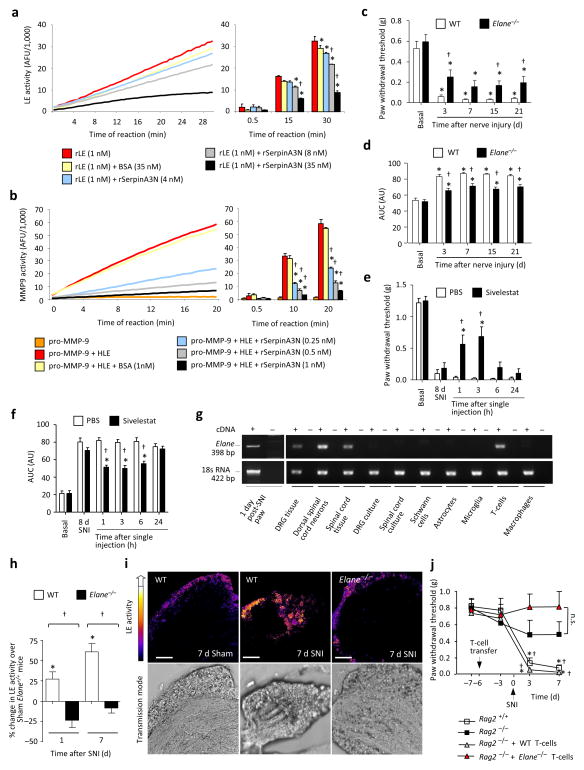Figure 4.
Leukocyte elastase (LE) is a substrate for SerpinA3N and promotes neuropathic allodynia. (a, b) LE activity (a) or MMP9 activity (b), as assessed by in vitro fluorometric assays. AFU: arbitrary fluorescence units; n = 3, *P < 0.05 compared to protease alone, †P < 0.05 compared to BSA control. (c, d, e, f) Paw withdrawal thresholds (c, e) and AUC of responses to von Frey filaments (d, f) in LE null (Elane−/−) and WT mice (c, d) or in WT mice following injection of the LE inhibitor Sivelestat, or vehicle 8 days post-SNI (e, f); n = 8–9/group; *P < 0.05 compared to basal (c, d) or vehicle (e, f), †P < 0.05 between genotypes (c, d) or compared to vehicle (e, f). (g) Elane mRNA expression in different cell types in vitro or tissues from WT mice. (h, i) Quantification (h) and staining (i) of LE activity in L4 DRGs of Elane−/− and WT mice; n = 4–5 experiments, 4 mice/data point; *P < 0.05 compared to sham, †P < 0.05 between genotypes, 1-way ANOVA, post-hoc Tukey’s test. Scale bar: 100 μm. (j) Mechanical allodynia in Rag2−/− and WT mice following adoptive transfer of WT- or LE-deficient T cells 6 d prior to SNI; n = 10 mice/group; *P < 0.05 compared to basal values, †P < 0.05 compared to Rag2−/− mice without T-cell transfer. Unless otherwise indicated, 2-way ANOVA of repeated measures, Tukey’s post-hoc test. Error bars: standard error of mean.

